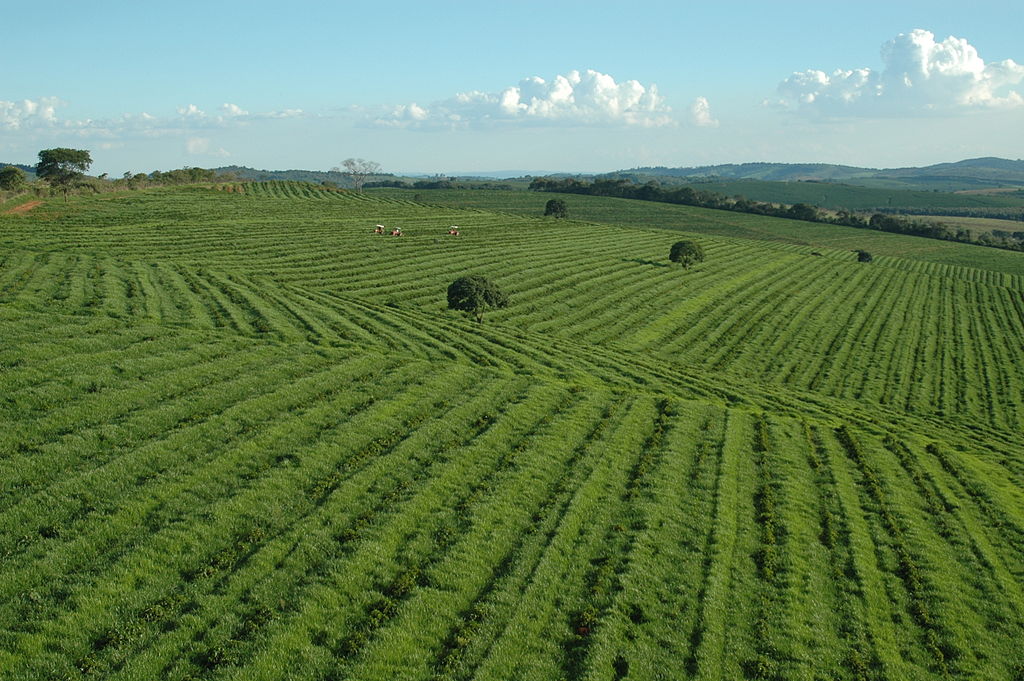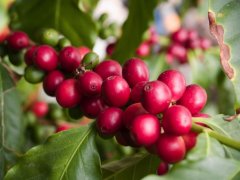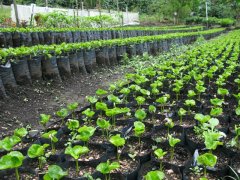Brazilian coffee industry Brazilian coffee bean production and processing technology Brazilian coffee export and sales

Professional coffee knowledge exchange more coffee bean information please follow the coffee workshop (Wechat official account cafe_style)
Brazilian coffee industry
Brazil's coffee industry accounts for about 1/3 of the world's total output and is currently the world's largest coffee producer. Coffee plantations in Brazil cover a total area of about 27000 square kilometers, mainly in Minas Gerais, Sao Paulo and Parana in southeastern Brazil, because the environment and climate of these states provide ideal growth conditions for coffee beans.
Production and treatment Technology of Brazilian Coffee beans
In the past 150 years, Brazil has been the world's largest coffee producer, accounting for about 1/3 of the world's coffee production. In 2011, Brazil remained the world's largest coffee producer, followed by Viet Nam, Indonesia and Colombia [2]; total coffee production in Brazil in that year was 2.7 million tons, twice that of Viet Nam [3]. About 3.5 million people in Brazil are engaged in coffee farming, mainly in rural areas [4].
There are about 220000 coffee plantations in Brazil [5], and coffee plantations in the country cover a total area of about 27000 square kilometers [4], mainly in Minas Gerais, Sao Paulo and Parana in southeastern Brazil, because the environment and climate of these states provide ideal conditions for the growth of coffee beans; Minas Gerais accounts for about half of the national coffee production [6]. Most plantations harvest during the dry season from June to September. In most countries, small fruit coffee beans are treated with "washed coffee" technology, but in Brazil, almost all coffee is treated with "air-dried coffee" [8], coffee beans are dried in the sun for 8-10 days [9], and then they are classified and packaged [10].
Brazilian Coffee Export and sales
In the 1850s and 1960s, Brazilian coffee exports accounted for more than 50% of total exports of all goods [11] and 63.9% [12] in 1950, but this percentage began to decline in the 1960s because of the expansion of the market for export goods. In 1980, the ratio of Brazilian coffee exports to total exports of all goods fell to 12.3% [12] and only 2.5% in 2006 [4].
Brazil itself is the world's second-largest consumer of coffee and is expected to overtake the United States by the mid-2010s [13]. Brazil ranks 14th in per capita coffee consumption in the world [14].
In Brazil, the import of certain types of coffee beans into the country will be taxed by 10-16% [15]; the export of unprocessed coffee to the United States, the European Union and Japan will be duty-free [16]. However, the tax rate for the export of processed coffee to the European Union is 7.5%, to Japan is 10%, and to the United States is duty-free [16].
Important Notice :
前街咖啡 FrontStreet Coffee has moved to new addredd:
FrontStreet Coffee Address: 315,Donghua East Road,GuangZhou
Tel:020 38364473
- Prev

The representative of neutral coffee-Brazilian coffee beans characteristics of Brazilian coffee treatment of Brazilian coffee
Professional coffee knowledge exchange more coffee bean information please follow the coffee workshop (Wechat official account cafe_style) Brazilian coffee is the world's number one coffee producer, coffee beans full particles, mild aroma and bean nature, moderate sour taste, smooth taste, is the representative of neutral coffee, individual taste or mixed with other coffee beans are an excellent choice. From
- Next

Brazilian Coffee beans in Brazilian Sanders Coffee Flavor Italian matching beans the Origin of the Brazilian COE Competition
Professional coffee knowledge exchange more coffee bean information please follow coffee workshop (Wechat official account cafe_style) 1 Brazil Santos said that Brazil Santos, in addition to the football team, I believe many people will think of coffee. Santos is a port in southeastern Brazil. In the past, coffee (generic coffee) from different provinces was printed on the port when it was exported.
Related
- Detailed explanation of Jadeite planting Land in Panamanian Jadeite Manor introduction to the grading system of Jadeite competitive bidding, Red bid, Green bid and Rose Summer
- Story of Coffee planting in Brenka region of Costa Rica Stonehenge Manor anaerobic heavy honey treatment of flavor mouth
- What's on the barrel of Blue Mountain Coffee beans?
- Can American coffee also pull flowers? How to use hot American style to pull out a good-looking pattern?
- Can you make a cold extract with coffee beans? What is the right proportion for cold-extracted coffee formula?
- Indonesian PWN Gold Mandrine Coffee Origin Features Flavor How to Chong? Mandolin coffee is American.
- A brief introduction to the flavor characteristics of Brazilian yellow bourbon coffee beans
- What is the effect of different water quality on the flavor of cold-extracted coffee? What kind of water is best for brewing coffee?
- Why do you think of Rose Summer whenever you mention Panamanian coffee?
- Introduction to the characteristics of authentic blue mountain coffee bean producing areas? What is the CIB Coffee Authority in Jamaica?

